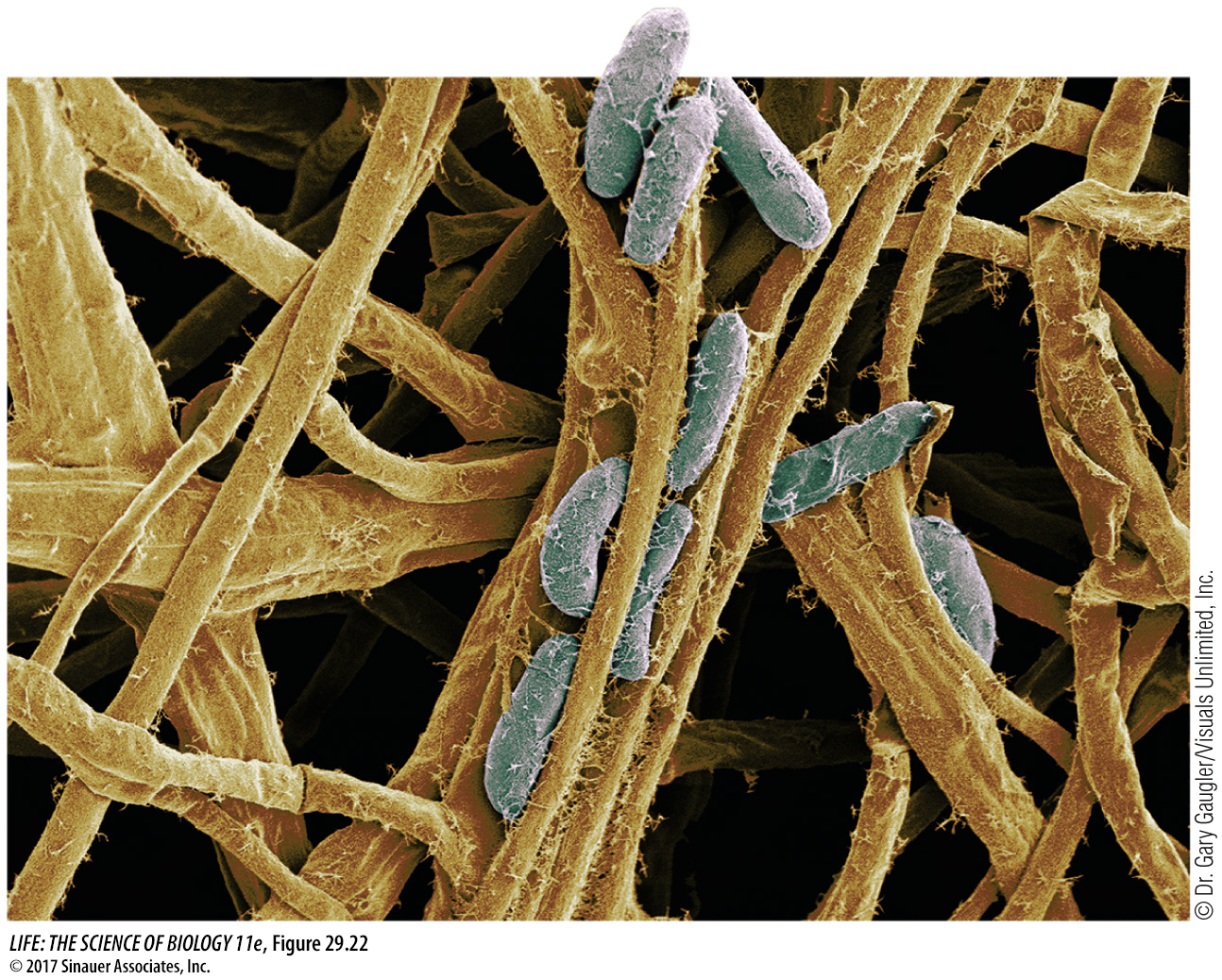Fungi provide important weapons against diseases and pests
We started this chapter with the story of the discovery of penicillin. The discovery of antibiotics produced by fungi revolutionized medical treatment of bacterial diseases in humans and their domestic animals. Live strains of fungi are also used to combat various pest species of plants and animals.
In Africa, the parasitic plant witchweed (Striga) causes crop losses of about $7 billion every year. A group of Canadian biologists discovered that a strain of the mold Fusarium oxysporum could be applied to crops to control witchweed without harming the crop plants (Figure 29.22). Other strains of Fusarium that preferentially attack coca plants, the source of cocaine, have been proposed to combat illicit drug production. Still other fungi are used to attack various animal pests, such as termites and aphids, and even malaria-
